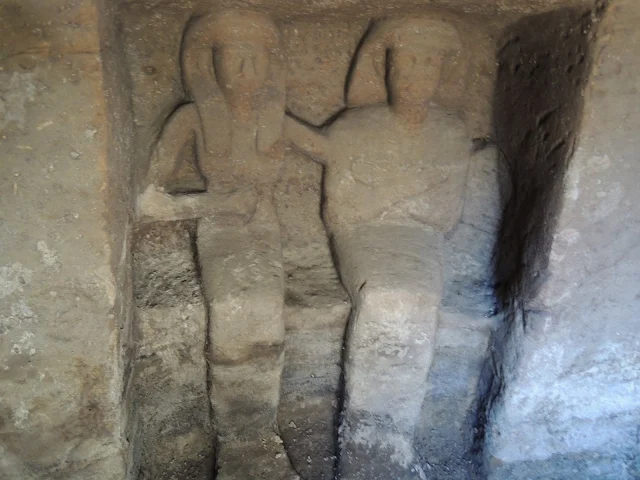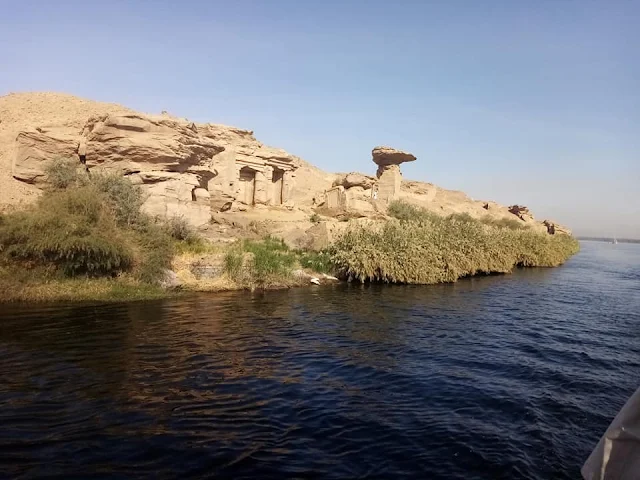Aswan Travel Guide Discover Aswan
Aswan, with its ancient wonders, natural splendor, and modern marvels, offers a captivating journey through the heart of Egypt's southern region. Whether exploring its iconic temples, cruising along the Nile, or savoring its culinary delights, Aswan promises an unforgettable travel experience that leaves a lasting impression on every visitor. Embark on a voyage of discovery and immerse yourself in the timeless charms of this enchanting city along the banks of the Nile. Beyond its historical landmarks, Aswan is blessed with breathtaking natural beauty. The serene waters of the Nile River, framed by lush greenery and golden sand dunes, offer a tranquil escape from the hustle and bustle of city life. A felucca ride along the Nile is a quintessential Aswan experience, allowing travelers to soak in the stunning vistas while savoring the gentle breeze.
For nature enthusiasts, a visit to the Nubian Village provides an opportunity to immerse in the local culture amidst picturesque surroundings. Set against the backdrop of the Elephantine Island and the shimmering waters of the Nile, the Nubian Village offers insights into traditional Nubian life, vibrant architecture, and warm hospitality. Tombs of the Nobles in Aswan
There have been about 100 tombs discovered as of July 2022. The official website of the Egyptian Ministry of Tourism and Antiquities writes that the inscriptions on the walls of the tombs here highlight the importance of the roles nobles played during this period of history, such as launching exploratory and commercial voyages and leading military campaigns.
Qubbet El-Hawa Aswan Egypt AttractionsQubbet el-Hawa or "Dome of the Wind" is a site on the western bank of the Nile, opposite Aswan, that serves as the resting place of ancient nobles and priests from the Old and Middle Kingdoms of ancient Egypt.The necropolis in use from the Fourth Dynasty of Egypt until the Roman Period.
Qubbet El-Hawa was inscribed on the UNESCO World Heritage List in 1979 along with other examples of Upper Egyptian architecture, as part of the "Nubian Monuments from Abu Simbel to Philae" (despite Qubbet el-Hawa being neither Nubian, nor between Abu Simbel and Philae).
The Ruins of Khnum Temple At Elephantine Island
According to the ancient Egyptian religion and Kushite religion, Elephantine was the dwelling place of Khnum, the ram-headed god of the cataracts, who guarded and controlled the waters of the Nile from caves beneath the island. He was worshipped here as part of a late triad of Egyptian deities.
This "Elephantine Triad" included Satis and Anuket. Satis was worshipped from very early times as a war goddess and protector of this strategic region of Egypt. When seen as a fertility goddess, she personified the bountiful annual flooding of the Nile, which was identified as her daughter, Anuket. The cult of Satis originated in the ancient city of Aswan.
Later, when the triad was formed, Khnum became identified as her consort and, thereby, was thought of as the father of Anuket. His role in myths changed later and another deity was assigned his duties with the river. At that time his role as a potter enabled him to be assigned a duty in the creation of human bodies.
Agha Khan Mausoleum in Aswan
The Mausoleum of Aga Khan is the mausoleum of Aga Khan III, Sir Sultan Muhammed Shah, who died in 1957. The mausoleum is located at Aswan along the Nile of Egypt, since Egypt was formerly the centre of power of the Fatimids, an Ismaili Shia dynasty.
The construction of the mausoleum began in 1956 and ended in 1960.The Aga Khan's wife, Begum Om Habibeh Aga Khan, commissioned the construction of the mausoleum, which initially accepted tourists inside; however, the interior was closed off to the public in 1997.
A red rose is laid on the Aga Khan's tomb every day – a practice first started by Begum Om Habibeh Aga Khan.
The mausoleum sits atop a hill along the west bank of the Nile, where it overlooks Aga Khan III and Begum Om Habibeh Aga Khan's villa, the Prince Sadruddin Aga Khan House. The villa was designed by Egyptian architect Hassan Fathy, and it served as a winter home for Aga Khan III, whose will stated that he would be buried near the villa two years after his death.
Aswan Dam (The High Dam)
The Aswan Dam, or more specifically since the 1980s, the Aswan High Dam, is one of the world's largest embankment dams, which was built across the Nile in Aswan, Egypt, between 1960 and 1970. When it was completed, it was the tallest earthen dam in the world, eclipsing the United States' Chatuge Dam.
Its significance largely upstaged the previous Aswan Low Dam initially completed in 1902 downstream. Based on the success of the Low Dam, then at its maximum utilization, construction of the High Dam became a key objective of the new regime the Free Officers movement of 1952; with its ability to better control flooding, provide increased water storage for irrigation and generate hydroelectricity, the dam was seen as pivotal to Egypt's planned industrialization. Like the earlier implementation, the High Dam has had a significant effect on the economy and culture of Egypt.
The Aswan Dam was designed by the Moscow-based Hydroproject Institute. Designed for both irrigation and power generation, the dam incorporates a number of relatively new features, including a very deep grout curtain below its base. Although the reservoir will eventually silt in, even the most conservative estimates indicate the dam will give at least 200 years of service.
The Unfinished Obelisk and the Granite Quarries
The Unfinished Obelisk is here. Queen Hatshepsut had a thing for obelisks…she conceived of them, and built so, so many. The largest one she ever commissioned lies here: 1/3 larger than any other ancient Egyptian obelisk. You can see it lying on its side in the background here.
The unfinished obelisk was not completed, as it was carved into the granite mountain Which was considered the most famous place for carving obelisks in southern Aswan But it was not lifted because there was a crack in the middle of it The obelisk dates back to the era of Queen Hatshepsut. The obelisk weighs 1168 tons and is 41.75 meters longThe unfinished obelisk was not completed, as it was carved into the granite mountain Which was considered the most famous place for carving obelisks in southern Aswan But it was not lifted because there was a crack in the middle of it The obelisk dates back to the era of Queen Hatshepsut. The obelisk weighs 1168 tons and is 41.75 meters longFatimid Cemetery in Aswan
The Fatimid Cemetery in Aswan is one of the most important Islamic monuments dating back to the stages of the Islamic conquest of Egypt in 21 A.H. these tombs are unique in its Architectural style dated back to the first century A.H.
These tombs were built during the Arab conquest of Egypt and took place in Aswan, where was the focus of attention and the southern gateway to Egypt, and because the climate is similar to the climate of the Arabian Peninsula in addition to the frequent wars between Arab conquerors and the Nubian tribes that resulted a large number of victims that buried in the same place.
The Fatimid Cemetery are divided into two areas, the marine tombs located in “Anani” area in Aswan and the tribal tombs located in El Sadat Road, there was only one cemetery and with the entry of Urbanism it was divided into two blocks, and it is considered the oldest witness of Islamic history in Egypt.Philae Temple in Aswan
The Philae temple complex (/ˈfaɪliː/; Greek: Φιλαί or Φιλή and Πιλάχ, Arabic: فيلة Egyptian Arabic: [fiːlæ], Egyptian: p3-jw-rķ' or 'pA-jw-rq; Coptic: ⲡⲓⲗⲁⲕ, ⲡⲓⲗⲁⲕϩ,Coptic pronunciation: [ˈpilɑk, ˈpilɑkh]) is an island-based temple complex in the reservoir of the Aswan Low Dam, downstream of the Aswan Dam and Lake Nasser, Egypt.
Until the International Campaign to Save the Monuments of Nubia, the temple complex was located on Philae Island, near the expansive First Cataract of the Nile in Upper Egypt. These rapids and the surrounding area have been variously flooded since the initial construction of the Aswan Low Dam in 1902. The temple complex was dismantled and moved to nearby Agilkia Island as part of the UNESCO Nubia Campaign project, protecting this and other complexes before the 1970 completion of the Aswan High Dam. The hieroglyphic reliefs of the temple complex are being studied and published by the Philae Temple Text Project of the Austrian Academy of Sciences, Vienna (Institute OREA).

Since Philae was said to be one of the burying-places of Osiris, it was held in high reverence both by the Egyptians to the north and the Nubians (often referred to as "Ethiopians" in Greek) to the south. It was deemed profane for any but priests to dwell there and was accordingly sequestered and denominated "the Unapproachable" (Ancient Greek: ἄβατος). It was reported too that neither birds flew over it nor fish approached its shores. These indeed were the traditions of a remote period; since in the time of the Ptolemaic Kingdom, Philae was so much resorted to, partly by pilgrims to the tomb of Osiris, partly by persons on secular errands, that the priests petitioned Ptolemy VIII Physcon (170-117 BC) to prohibit public functionaries at least from coming there and living at their expense.

In the nineteenth century, William John Bankes took the Philae obelisk on which this petition was engraved to England. When its Egyptian hieroglyphs were compared with those of the Rosetta Stone, it threw great light upon the Egyptian consonantal alphabet.
The islands of Philae were not, however, merely sacerdotal abodes; they were the centres of commerce also between Meroë and Memphis. For the rapids of the cataracts were at most seasons impracticable, and the commodities exchanged between Egypt and Nubia were reciprocally landed and re-embarked at Syene and Philae.Beit El-waly Kalabsha Temple on the island of Kalabsha
The temple of the house of the governor in Egypt is one of the oldest temples built by King Ramses II in the old Nubia as a kind of control, located 55 meters south of Aswan. The temple of the house of the governor was dedicated to the worship of "Amun", "Khenom" and "Anqat". 1960, during the construction of the High Dam, which was moved to a location higher than its old site, near the Kalabsha temple south of the High Dam, was transferred by Polish archaeologists, and funded by the Swiss Institute and the Chicago Institute.
The temple of the house of the governor is one of a group of temples built by Ramesses II in the old Nubia region as proof of his control and influence in this region. His name is now referred to as a Christian nasek. There are still clear inscriptions, but unfortunately the most important inscriptions have faded near the middle of the southern wall.
The temple is a courtyard connected to a hall with a ceiling on two pillars leading to the Holy of Holies. The wars led by Ramesses the Second against the kings of Nubia were painted on a wheel and two of his sons attacked him. They attacked a group of Nubians armed with arches and arrows.
.jpg)
The Nubian reaction at the time fled in panic of this attack, and apparently succeeded in controlling this area where we sit in a tent on its display, and accept the gifts of the Kushites, including the governor of Kushi see in another scene rewarded Ramses II golden necklaces for his actions, Ramses II takes it Nubian It is a gold artifacts, and ivory and ebony and incense, and cheetahs, and ostrich feathers and monkeys and bulls, some researchers saw the effects that this scene represents the strength of the commercial relationship between Egypt and Nubia and not to provide a tribute.
The wars of Ramses II were not only envisaged with the Nubians, but also with the Libyans and the Hittites.
The engravings in the Holy of Holies should be purely religious. The temple was dedicated to Khannum and his wives. Horus and his mother Isis were also present. Ramses presented the drawings and attributed himself as their son, in addition to three broken statues. The sources indicate that the cause of the damage was due to the Christian era, As a church.
The title of the governor is attributed to one of the righteous righteous who inhabited him at one time, and was called the house of the first, but over time the name of the governor.
The Temple of Beit Al-Waly is located on the island of Kalabsha, south of the Kalabsha temple, near Jarf Hussein, and the Qortasi chamber south of Aswan, the southernmost part of Egypt.
The Botanic Garden (Kitchener Island)
The Aswan Botanical Garden is part of Kitchener’s Island, situated west of Elephantine Island in the river Nile. These manicured gardens make a great day trip and can be visited alongside several other Aswan sites, such as Elephantine Island, the Temple of Philae, and the Aswan Dam.
The gardens have a rich and interesting history, as we’ll see in our deeper look into this tropical oasis. From the types of plants and birds that populate the island to its initial creation, this guide to Aswan Botanical Garden will tell you all you need to know before visiting.
The gardens on Kitchener’s Island are only accessible by boat. Visitors can take public ferries that travel between Aswan, Elephantine Island, and Kitchener’s Island for a relatively low cost. If you would prefer something more direct and private, hire a felucca — a traditional wooden boat.
Lord Horatio Kitchener, whom the island was named after, was given this plot of land during his position as sirdar, or commander in chief, of the Egyptian army in 1892. Outside of his military responsibilities, Kitchener was a keen gardener and converted the 6.8 hectares into an oasis with the help of the Ministry of Irrigation.
He imported plants from countries across the world, including the Far East, Africa, and India to populate the oval-shaped island into a paradise of birds and hundreds of flora and fauna. The island is divided into 27 squares with vertical and horizontal paths intersecting each other, giving it the appearance of a chess board.
Kertassi Temple Kiosk of Qertassi Chapel
This Qertassi Chapel was erected on a rocky plateau overlooking the Nile, about 40 km south of the Aswan Dam, close to the Temple of Beit El Wali and the Temple of Kalabsha. It dates back to the Greco-Roman era and is considered one of the most beautiful chapels in Lake Nasser, despite its total area of 25 square feet.
The Egyptian Antiquities Authority saved this shrine by moving its parts in 1963 and reconstructing it to the southeast of Kalabsha Temple. It was erected at the entrance of a road that leads to an old sandstone quarry. It was built of sandstone, and it consists of one square room surrounded by four columns with the form of the papyrus, and a curtain wall connects between the columns.
The main entrance to it is located to the north and is decorated with two columns. There is also a small entrance to the western side. On both sides of the gate of the Chapel there are two square columns and crowns on top of them in the form of Hathor's head. She has the face of a human and the ears of a cow, Hathor was an expression of love, music and beauty. These Hathor Columns face the north side, and there are ceiling connecting the columns.
Only a small part remained of the Chapel inscriptions on the northwest column, which represents one of the Ptolemaic kings. It was used to place Isis's boat when moving from her temple on the island of Philae to the temples of Lake Nasser. This temple was 30 km to the south of the present day, where it was moved during the construction of the High Dam.
Nubia Museum in Aswan
The Aswan Museum is located at the southern end of the island. Ongoing excavations by the German Archaeological Institute at the island's ancient town site have uncovered many findings that are now on display in the museum, including a mummified ram of Khnum. A sizable population of Nubians live in three villages in the island's middle section. A large luxury hotel is at the island's northern end.
The new Nubian Museum was opened in 1997 and the beautiful lines of its architecture alone is worth seeing. Nestled into the hillside, it covers 50,000 square metres of landscaped gardens and buildings which are divided up into different sections. It is partly an open-air museum where the visitor can wander the paths, meandering between a prehistoric cave with painted rock-art, ancient Egyptian statues, obelisks and columns, Roman frescoes and even a complete Nubian house.
Inside the museum a flight of stairs leads down from street level to the entrance of the temperature and light controlled exhibition space. The focal point is an 8m high Nubian sandstone statue of Rameses II, brought from storage after 27 years. The visitor is led around the exhibits in a chronological order, beginning with the Prehistoric, through the Pharaonic era to Graeco-Roman, Coptic and Islamic periods of art.
Large ‘history-boards’ on the walls near each exhibit provide plenty of background information on Nubia’s role in Egyptian history. Other exhibition zones depict the story of irrigation, the UNESCO campaign to save the Nubian monuments threatened by flooding after the building of the High Dam and many folk and heritage displays. There is an information centre, a gift shop and toilets on the ground floor and stairs and lifts to other areas. This museum is a showcase for the future of Egyptian museums and is a tribute to those who took part in its design, which has recently been awarded the prestigious International Aga Khan Award for Architecture.
Nubian villages in Aswan
have its own lifestyle, traditions, and language. the houses are colored and women has unique uniform. Aswan, a city on the Nile River, has been southern Egypt’s strategic and commercial gateway since antiquity. It contains significant archaeological sites like the Philae temple complex, on Agilkia Island near the landmark Aswan Dam. Philae’s ruins include the columned Temple of Isis, dating to the 4th century B.C. Downriver, Elephantine Island holds the Temple of Khnum, from the Third Dynasty.
Monastery of Anba Hatre / Monastery of Saint Simeon
The Monastery of Anba Samaan is located behind a hill, in the West Bank of Aswan, in front of Elephantine Island. It is usually visited by tourists taking a camel tour. The real name of the monastery is Anba Hadra. It was founded by an anchorite who was consecrated a bishop of Syene by Patriarch Theophilus (385-412 AD). The tradition tells that just after his marriage at the age of eighteen, he encountered a funeral procession. This inspired him to preserve his chastity and he decided to be a disciple of Saint Baiman. He also dedicated his life to the studying of the life of Saint Antony.
Anba Hadra died during the time of Theodosius I. The monastery was built during the sixth or seventh century and it was reconstructed during the eleventh century. It suffered great damage during the Ayyubid rule (12th century) as their troops were following the Fatimides who escaped to Nubia. Travelers tell that during the 13th century, Anba Hadra was once one of the biggest monasteries in Egypt. May be it was abandoned because of lack of water or because of the attacks of the Nubians. The monastery is built around a cliff that separates it into two levels, all surrounded by a six meter high wall of limestone and unbaked bricks, which once had towers and lookouts.
The upper terrace can be reached by a stairway, from the north wall of the church. It consisted of a large keep with individual cells for the monks, a refectory, a kitchen and several workshops that had provided a permanent living quarters for the monastic community. The Lower entrance of the Lower terrace lies under the east wall beneath a defensive tower opening to a vestibule with a barrel vaulted roof that leads into the monastery.
The terrace has the original rock caves of the saints, the church with its baptistery, and lodging for pilgrims. The church was built in the tenth century. Only the lower part of the church survived, however it still give us an important example of a domed oblong church, similar to the Fatimid architecture of the epoch. The plan of the church consists of a nave, two side aisles and two octagonal domes.
The room at the east end of the south aisle served as a baptistery. At the west end of the north aisle of the church, the structure rests against the rock which delimits the lower terrace. In this place, there is an ancient Egyptian rock tomb that was used by the monks. Most of the paintings of the eleventh and twelfth century on the walls are destroyed, but we can still observe on the dome scenes of the Christ and angels. On the north wall, there are still some paintings representing the Elders of Revelation and on the west side of the church, there is a painting representing the Virgin Mary. The ceiling of the grotto is adorned with geometrical designs that date back to the sixth or seventh century. The cemetery of the monastery is considered a great source of information about early Christians, their conditions and their habits. The remains of the monastery are also a great treasure for archaeologists and historians, as, though much of the monastery are ruins, many of its basic features are still well preserved.
The Nilometer at Elephantine Island Aswan
The Nilometer of Satet Temple on the Elephantine Island is one of the oldest nilometers in Egypt. Comprising of a simple staircase corridor that descends towards tha Nile. It was last reconstructed in Roman times and still in use as late as the nineteenth century CE.
Nilometers, intricately linked with the ebb and flow of the Nile, held a pivotal role in predicting Egypt's future conditions, particularly concerning floods and droughts.
located on the Nile Valley island of Elephantine in modern-day Aswan. Governed exclusively by the priests of Hapi, the Nilometer's water level recordings influenced the economy by informing farmers and prefects about impending changes in the river. Dating back to the Roman occupation period, the Elephantine Nilometer remains shrouded in mystery regarding its originators.
Although the Roman markings suggest restoration during their reign, the presence of Greek and hieroglyphic inscriptions, some from the seventeenth dynasty, implies an ancient existence predating the occupation. Mahmud Bey, an esteemed astronomer during Khedive Ismail's era, restored the Nilometer after centuries of disuse. Distinctive features of the Elephantine Nilometer include engravings indicating building levels, showcasing water measurements as one descends the 90 stairs. It records the highest, lowest, and average water levels throughout history with horizontal lines.

Surprisingly, the use of sandstone in construction, despite Aswan's granite wealth, sets it apart. Notable is the absence of traditional Egyptian architectural features like the sun disk and cavetto cornice present in neighboring temples. Geographically positioned between the temples of Khnum and Satis, the Nilometer employs a bent axis plan, overlooking the temple of Satis. This study explores the Nilometer's historical context, architectural uniqueness, and its role as a critical instrument in understanding the Nile's behavior. Despite lingering uncertainties, the Elephantine Nilometer stands as an archaeological marvel, offering glimpses into ancient Egypt's hydrological foresight and technological prowess.
Dekkah Temple in Aswan
The temple of Dekka is situated in south Egypt, about 100 Km away from the famous Aswan High Dam, which was built to tame River Nile. Initially, it was constructed in Nubia, but in modern time, it had to be shifted to a place named Es-Sebua, that is 40 Km upstream the river and now this temple is placed on a small cliff. The shifting mission of this temple was accomplished from 1962 to 1968, so that the temple could be secured from the flood waters of the Lake Nasser and High Dam.
Though now this temple is also famously known to the world as El-Dakka, the local Egyptians call it as Pselqet, while the Greeks refer to it as Pselchis.
Dakah Temple It is a Greco-Roman temple dedicated to the Egyptian god of wisdom, Thoth. The temple is located in the New Valley of the Seboua in Aswan Governorate, Egypt. The temple was registered in the UNESCO World Heritage List in 1979, as part of the monuments of Nubia from Abu Simbel to Philae.
Sarenput II Tomb Qubbet El - Hawa
Sarenput was the son of a man named Khema and the nephew of the nomarch Sarenput I. Among his titles, he was nomarch of the 1st nomos of Upper Egypt ("Land of the Bow"), mayor of Elephantine, high priest, overseer of the priests of Satet and Khnum, and "leader of the border patrols at the narrow door of the southern lands". He held the title of nomarch since regnal Year 4 of Senusret II until Year 8 of Senusret III at least.
.jpg)
Like many of his predecessors, Sarenput made additions at the sanctuary of Heqaib at Elephantine: in particular, he ordered a shrine for his father Khema and one for himself, containing a statue of Khema and one of Sarenput II respectively. The two statues are stylistically different, with the former (Khema) being idealized and typical of the reign of Amenemhat II while the latter (Sarenput II) is more expressive, realistic and detailed, reflecting the style in use during the subsequent reign of Senusret II: both statues are considered to be masterpieces of the Middle Kingdom sculpture. Another statue depicting Sarenput II and probably coming from his tomb, is again stylistically typical of the reign of Amenemhat II.

Sarenput II built for himself the finest and largest tomb of Qubbet el-Hawa. After crossing a courtyard, a hallway lead to a large hall whose ceiling is supported by six pillars. Then another hallway – with several niches containing osirian statues of Sarenput on both sides – lead to the inner room, with four pillars and a niche once hosting a granodiorite statue whose remains are now in the British Museum . In spite of the tomb's grandness, only the niche and few pillars of the innermost chamber are decorated; nevertheless, the scenes are vividly painted and detailed, chiefly depicting the tomb owner.
Tomb of Herkhuf
Herkhuf was an Overseer of the troops and campaign commander in Upper Egypt during the reigns of Pepy I, Merenre and Pepy II in Dynasty VI. The tomb is famous for Harkhuf's biographical text on the entrance and the copy of a letter that he received from the boy-king Pepy II asking Herkhuf to send him the dwarf captured during his expedition in Africa, so that he might dance in the king's court, promising him gifts and gratifications.
The Autobiography of Harkhuf is a tomb inscription from Ancient Egypt which is significant to Egyptology studies. Harkhuf was a governor of Upper Egypt in the 23rd century BC. His name is sometimes spelled Herkhuf or Hirkhuf.
Tombs of Mekhu and Sabni
Mekhu and Sabni were father and son, both were governors of Upper Egypt during the reign of Pepi II of the 6th Dynasty. The reliefs on the walls of the tombs tell the story of the killing of Mekhu while he was on an expedition in Nubia and the efforts of his son, Sabni, to bring the body of his father back as well as his ceremonial burial.
Sabni informed King Pepi II of the event and the king sent his personal embalmers to mummify the deceased governor.
The tombs follow the Old Kingdom's style, with small obelisks and offering table at the entrance doorway. The Offering table of Mekhu still stands there.
The tomb of Mekhu, to the left side, has 18 columns and a niche in the back wall. The decoration, in reliefs, show daily life scenes of the deceased. Sabni's tomb façade tells the autobiography of Sabni and his successful expedition to recover his father's body. The tomb has 14 pillars and the reliefs on the back wall show Sabni hunting with his daughters.
Selesela Quarries and Chapels Aswan
Gebel el-Silsila is 65 km (40 mi) north of Aswan in Upper Egypt, where the cliffs on both sides close to the narrowest point along the length of the entire Nile.
The location is between Edfu in the north towards Lower Egypt and Kom Ombo in the south towards Upper Egypt. The name Kheny (or sometimes Khenu) means "The Place of Rowing". It was used as a major quarry site on both sides of the Nile from at least the 18th Dynasty to Greco-Roman times. Silsila is famous for its New Kingdom stelai and cenotaphs.The quarries were used again to extract materials for the building of the Essna lock untill the authorities prohibited such work because of the cracks produced in the Chapel of Horemheb and other 13 chapels.
Silsila’s New Kingdom stelae and cenotaphs still bear witness to its ancient significance. The area holds carvings, inscriptions, and shrines erected by officials involved in quarrying. Over the centuries, it became the largest sandstone quarry in Egypt, contributing to the construction of major temples. In summary, Jabal Silsila stands as a testament to Egypt’s rich history, and its secrets continue to captivate us, waiting to be further revealed in the future.
Wadi El Sebou Temple Nubia, Nasser Lake
The temple of Amun of Ramesses II at Wadi es-Sebua (Lions Valley) is the site of two New Kingdom Egyptian temples. The first temple was built by the 18th Dynasty Pharaoh Amenhotep III and subsequently restored by Ramesses II. The second larger temple which was built at el-Sebua was known as "The Temple of meryamun Ramesses II in the Domain of Amun" and constructed roughly 150 m northeast of Amenhotep III's temple.
Name Wadi el-Seboua means the Valley of the Lions and comes from Arabic because of the sphinxes guarding the temple. It lies about 100 kilometers away from the city of Aswan and it was one of the relocated monuments during the UNESCO Rescue Operation. Only the two pylons and the rock cut part survived, and in the surroundings there are 2 colossi of Ramses, one upright, one fallen and 8 fine Sphinxes guard the temple that have the images of African and Asiatic prisoners in their bases.
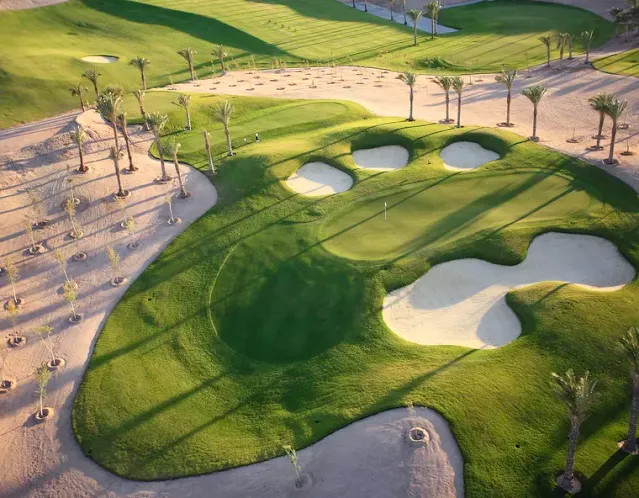







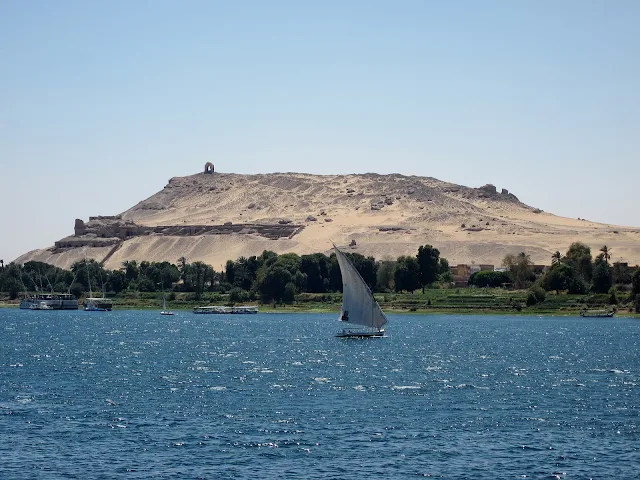


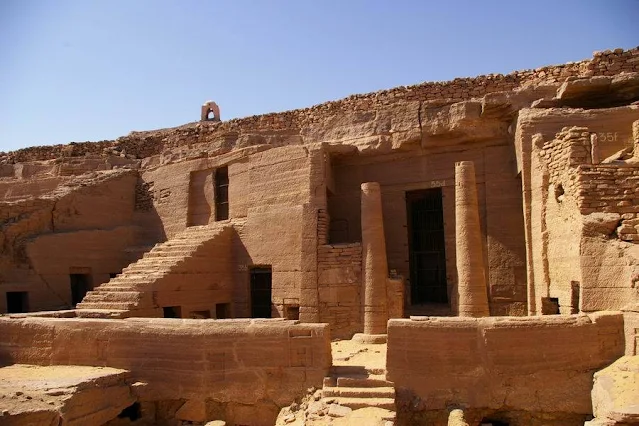
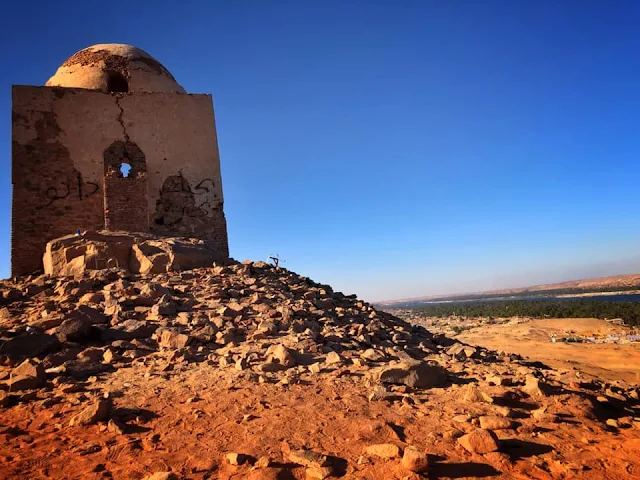
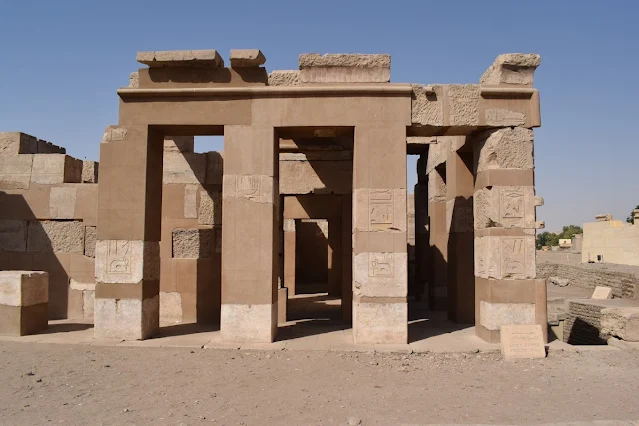


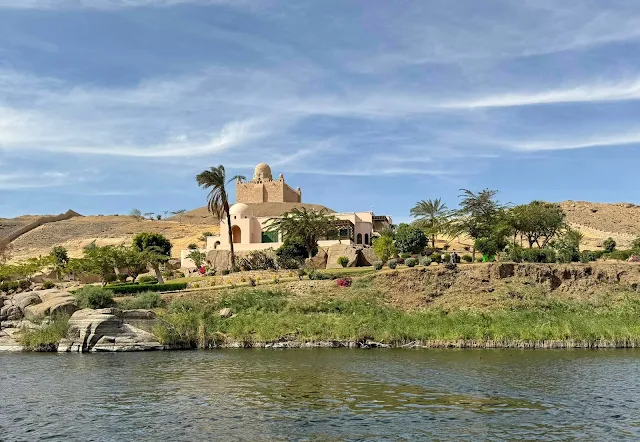


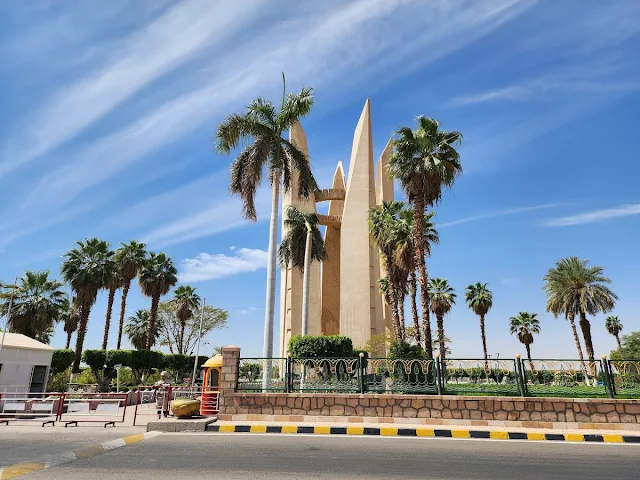
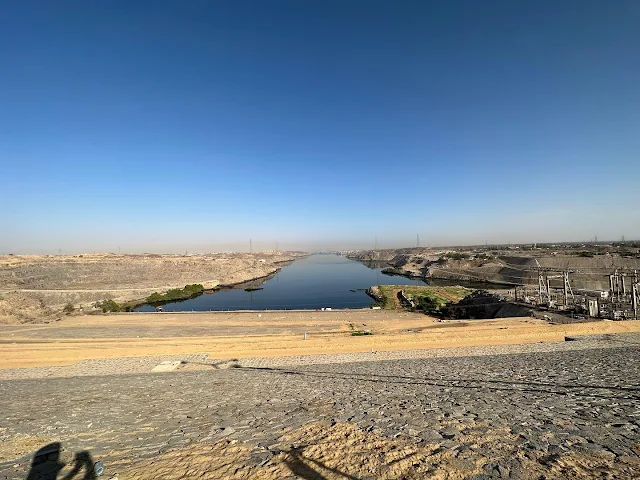
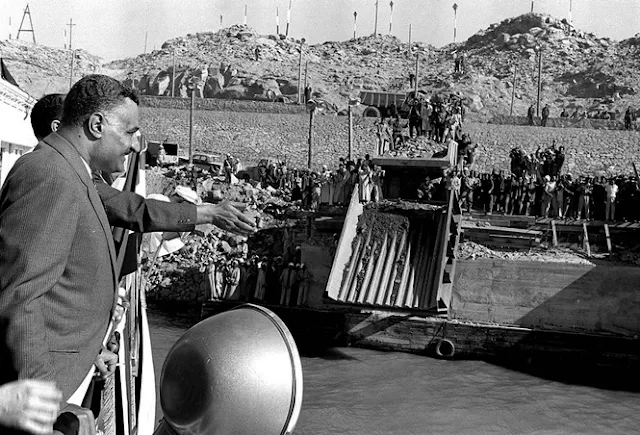
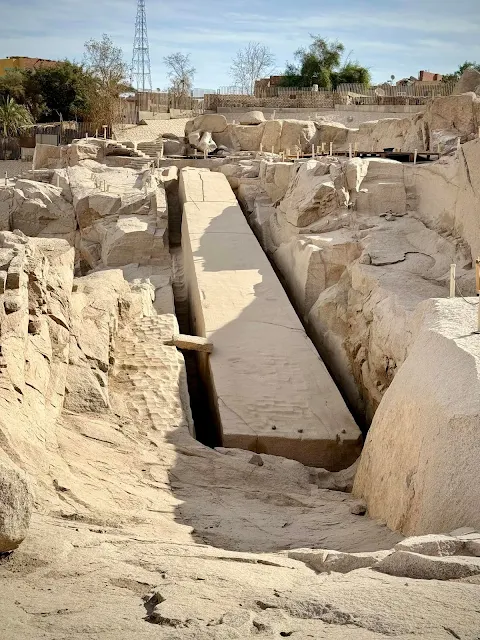
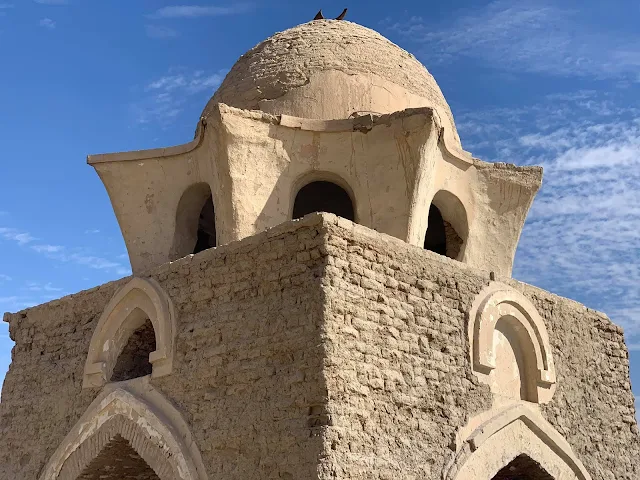


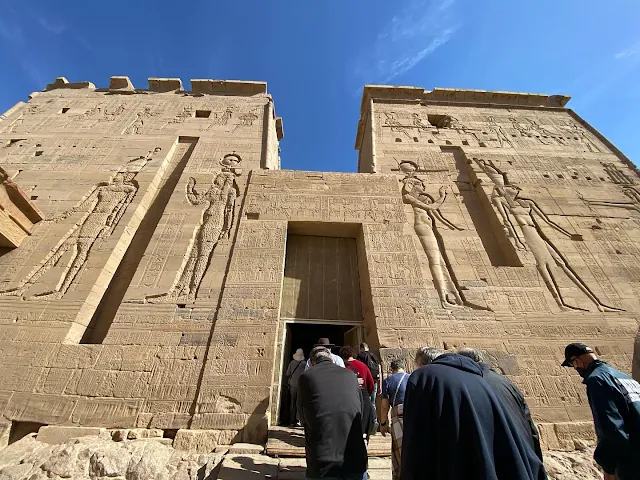


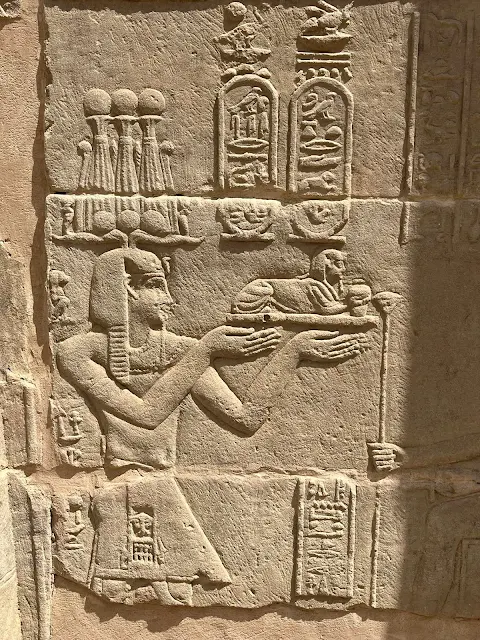


.jpg)

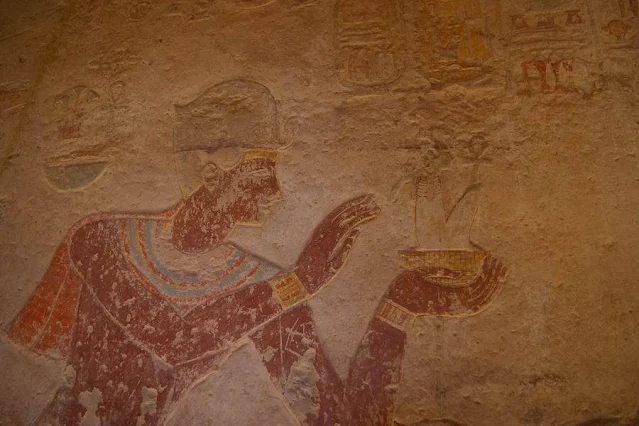
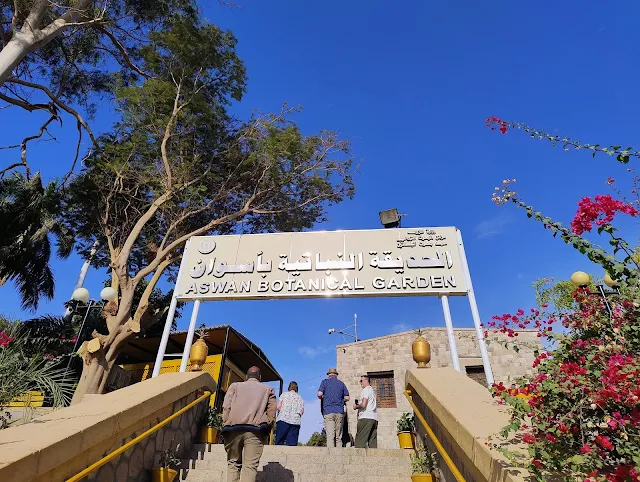




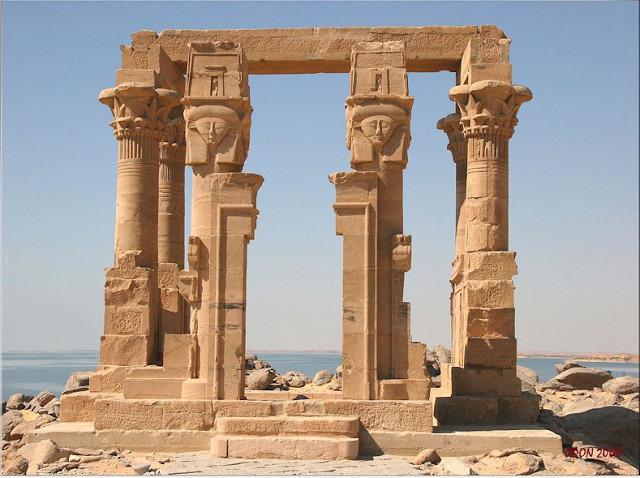




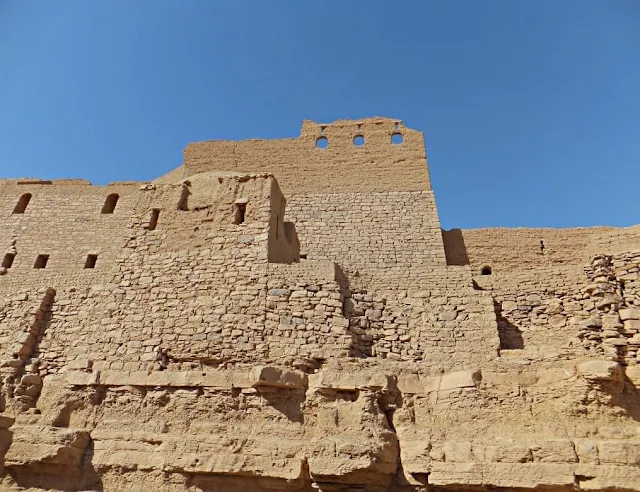
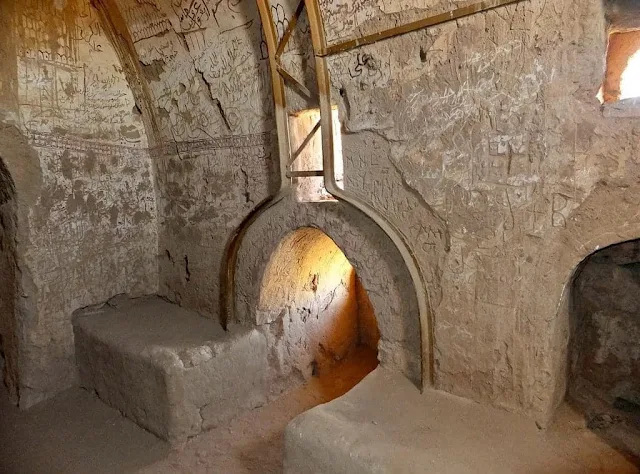


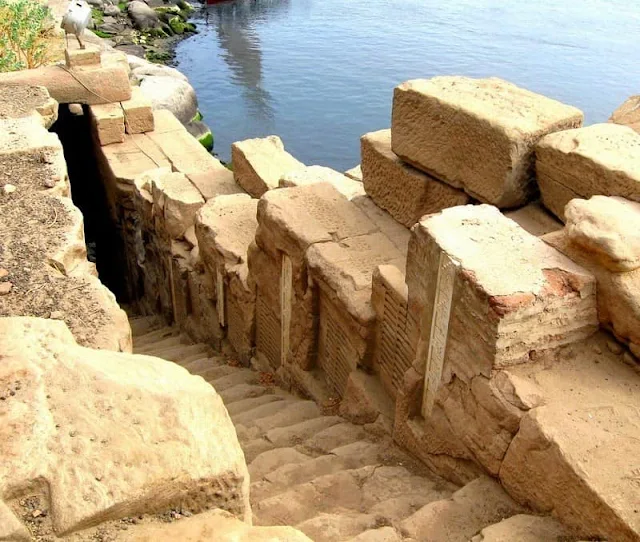






.jpg)








